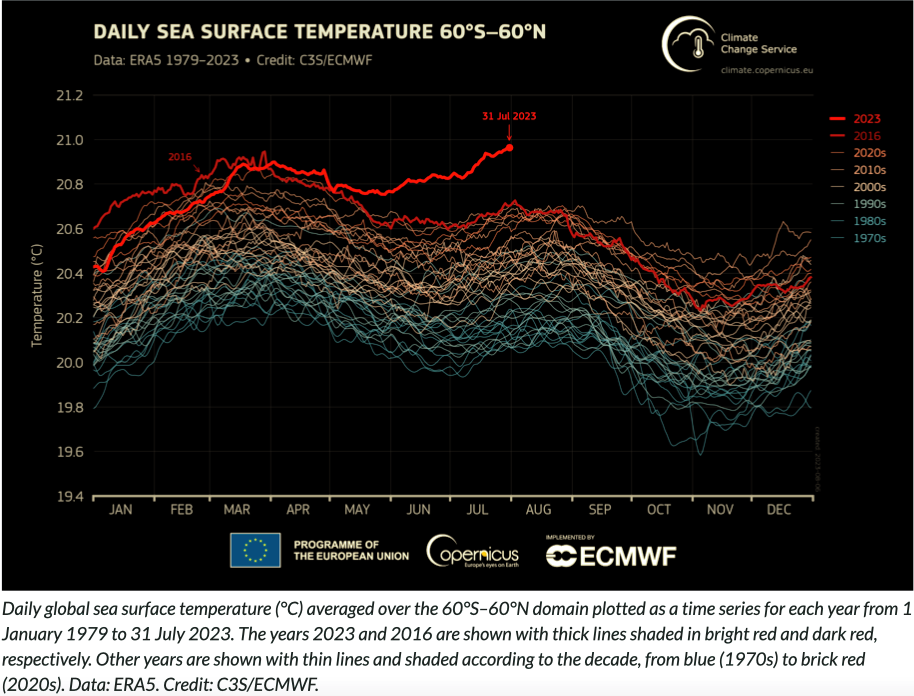
Geneva: It is official now that the global average temperature for July 2023 was the highest on record for any month and likely for at least 120,000 years. The World Meteorological Organization (WMO) and partners said today that the month was 0.72°C warmer than the 1991-2020 average for July, and 0.33°C warmer than the previous warmest month, July 2019.
“We just witnessed global air temperatures and global ocean surface temperatures set new all-time records in July. These records have dire consequences for both people and the planet exposed to ever more frequent and intense extreme events,” Samantha Burgess, Deputy Director of the Copernicus Climate Change Service (C3S), said.

July 2023 is estimated to have been around 1.5°C warmer than the average for 1850-1900. Heatwaves were experienced in multiple regions of the Northern Hemisphere, including southern Europe, and well-above-average temperatures occurred over several South American countries and around much of Antarctica.

For the month as a whole, global average sea surface temperatures were 0.51°C above the 1991-2020 average. The North Atlantic was 1.05°C above average in July, as temperatures in the northeastern part of the basin remained above average, and unusually high temperatures developed in the northwestern Atlantic. Marine heatwaves developed south of Greenland and in the Labrador Sea, in the Caribbean basin, and across the Mediterranean Sea. El Niño conditions continued to develop over the equatorial eastern Pacific.
Burgess informed that comparing averages for the calendar year to date, from January to July, the global mean for 2023 is the third highest on record, at 0.43°C relative to 1991-2020, compared with 0.49°C for 2016 and 0.48°C for 2020. “Even if this is only temporary, it shows the urgency for ambitious efforts to reduce global greenhouse gas emissions, which are the main driver behind these records,” she said.
The gap between 2023 and 2016 is expected to narrow in the coming months, as the latter months of 2016 were relatively cool (reducing the annual average to 0.44°C), while the remainder of 2023 is expected to be relatively warm as the current El Niño event develops.
Chris Hewitt, Director of Climate Services at the World Meteorological Organization said during a UN media briefing, “News of the warmest month on record perhaps shouldn’t come as a surprise…As we continue to see continued increases in concentrations of greenhouse gases in the atmosphere, this long-term warming will continue and temperature records will continue to be broken”.
It may be mentioned that the Copernicus Climate Change Service (C3S), implemented by the European Centre for Medium-Range Weather Forecasts on behalf of the European Commission with funding from the European Union, routinely publishes monthly climate bulletins reporting on the changes observed in global surface air temperature, sea ice cover and hydrological variables.
– global bihari bureau





